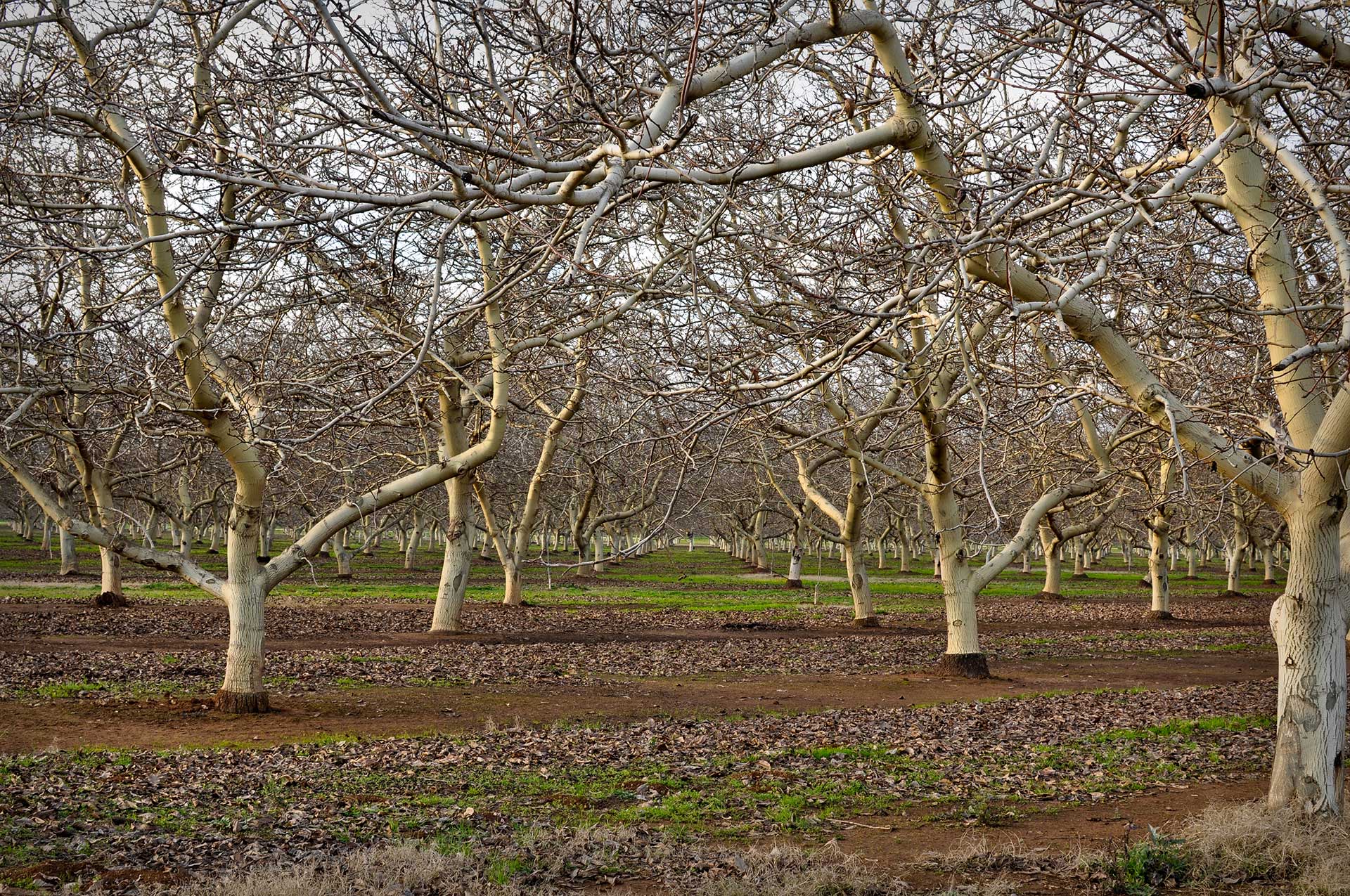The rush of the almond harvest season is behind us, and now growers are heading into preparations and maintenance for next season. But, while the trees may slow down for the winter, a grower’s work doesn’t stop.
There are a few things that you must remember or consider while the colder months approach. Water, nutrients, and other maintenance are vital to a successful crop next year.
Postharvest Criticals
Water
One of the most important things you can do postharvest is water the trees.
As much as possible, the trees need to have adequate moisture, which helps keep the leaves on the tree, barring possible diseases that might cause otherwise. For as much as an orchard needs to have water, it’s also extremely important to be cautious about overwatering. Moving from September and October and into winter weather may mean that trees are using less water, and therefore growers are applying less, but it’s still very important to keep up with irrigation.
The goal: to match evapotranspiration (ET) rates.
Nutrients
There is a variety of nutrients available on the market in either foliar or ground applications. The key to knowing which would be beneficial to your particular orchard is to take samples— from water to soil to tree tissue—and apply only what is absolutely necessary to promote ideal tree health. Too often, time and money is spent on unnecessary nutrient applications. Also keep in mind that there is still the question of bee health with nutrient sprays.
Gypsum
There are a few nutrient applications from which the trees will really benefit at this time of year. Gypsum is popular, in conjunction with postharvest irrigation, and is used with the intention—and hope—of maximizing the utility of applied water.
Boron and zinc
Boron and zinc are other important nutrients to consider, as fall is the best opportunity for their application. If tissue samples show that your orchard is deficient, “The most critical time for boron and zinc is at budbreak,” says Franz Niederholzer, Ph.D, farm advisor with the University of California Cooperative Extension (UCCE). Unfortunately, many growers miss this vital window by applying these nutrients at bloom.
Since boron helps the blossoms to set, it is best to apply the nutrient as a foliar spray and not as a ground application. When boron is applied to the soil, it doesn’t reach the buds quickly enough. Boron is also an inexpensive nutrient that can really boost yield.
If there is a lot of rust on the leaves, a strong zinc application can help knock off the infected leaves.
Nitrogen
General recommendations about nitrogen applications can span the gamut. While some may say that it should be a regular part of postharvest maintenance, others are not fans of the idea of applying nitrogen without really seeing if your orchard is deficient.
“If growers see a big deficiency, then they should really consider it. Otherwise, there’s no extension growth,” explains Niederholzer.
Nitrogen loads up in the storage cells of the woody tissue of the plant, and fall isn’t the ideal time to do this. In well-managed blocks where the trees are healthy and summer leaves return, there isn’t much need for additional nitrogen. In research done over a three-year period in California’s Sacramento Valley—the northernmost part of California’s prime central growing region—there was no yield benefit from fall nitrogen applications.
There are many things to do postharvest in preparation for next year’s crop. Taking tissue samples and knowing whether or not your orchard truly needs additional nitrogen can save both time and money, which are also two very valuable resources.
Surveys
Pest
Taking nut samples can be a helpful tool in identifying and measuring infestations. Some growers take samples and freeze them, killing the potential pests inside, and crack them out in winter. This can be done at night with a good light, and with a pest control advisor (PCA) or certified crop consultant (CCA) on hand to plan for next year based on the information gathered.
It’s also important to take a survey of what is left in the trees, taking note of mummy levels.
Weeds
Documented annual weed surveys not only keep a running log of weeds that are found in any particular orchard and when, but also help prepare a grower for what to expect for the following season. It’s also a great way to reevaluate the previous year’s protocol to measure its effectiveness. How did 2019’s weed control program look?
Postharvest Don’ts
Just as there are important actions to take post almond harvest, there are some things that should not be done during this same time.
Pruning
Trees in their first and second leaf are experiencing bursts of growth, but pruning them at the wrong time can be detrimental to their health. Pruning ahead of a rain is a poor choice because of the time it takes for those wounds to heal and the increase in disease or infection susceptibility. While healing periods are still being researched, current research suggests that the healing process takes a minimum of two weeks, but can last up to four weeks, leaving a significant window of vulnerability for these young trees.
If, for some reason, pruning must occur at this time, you can spray fungicide on the wounds to help protect cuts from forming infection. If rain appears in the forecast, spray between the cutting and the rain. But, if it can be helped at all, don’t prune in front of a rain.
Knowing and documenting the characteristics of any particular orchard is an incredible benefit when it comes to caring for the trees after harvest. Working closely with a PCA or CCA who also knows your orchard well can help ensure that your methods and implementation are ideal for your orchard in order to have the most favorable outcomes.
















